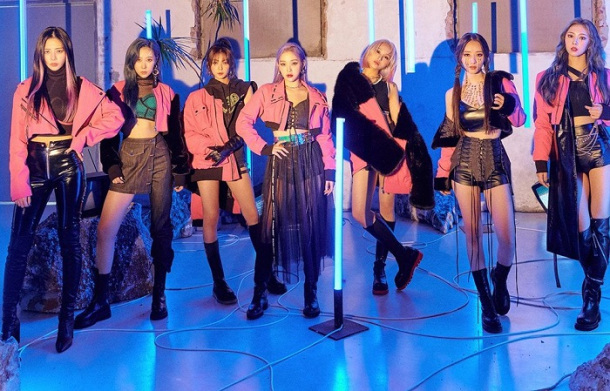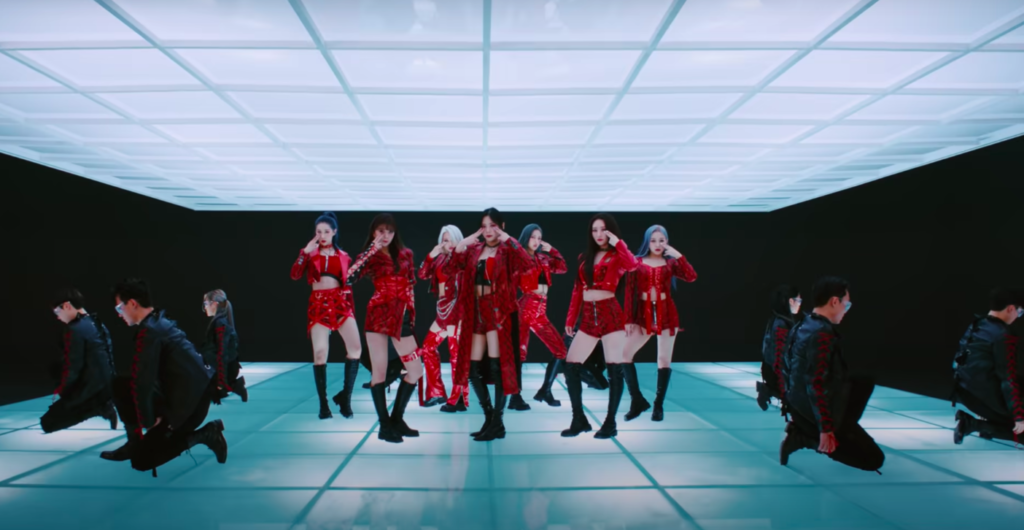
In 2020, K-pop’s resident rock girls Dreamcatcher embarked on a new chapter in their musical journey entitled Dystopia through two connected comebacks. Dystopia saw Dreamcatcher hit the sweet spot between palatable, trendier pop and their distinctive, heavier rock sound, and brought the group’s success to a new height, leaving fans in great anticipation of what the group will produce next.
As the third and final part of the Dystopia trilogy, Dreamcatcher finally reunite as a group after over a year, with Covid-19 travel restrictions causing their Chinese member Handong to be stuck in her homeland. In “Odd Eye”, Dreamcatcher stray away from the central lyrical motif of words, and more specifically its effects and consequences on a person. Instead, the song expresses the process of being lured into idealism, catching yourself before it is too late and coming to terms with the inevitable.
A plain white mask sets the opening scene, revealing itself as a chair that Yoohyeon sits on. Her eyes are closed, even as she sits across a small television screen. At the centre of the eerie, minimalistic scene is a table holding only a single glass of red liquid, possibly alluding to the blood mentioned in “Scream“. In an otherwise silent scene, the sound of trickling liquid and static awaken Yoohyeon, before flashing to a black scream where the title “ODD EYE” strikingly fills the screen.
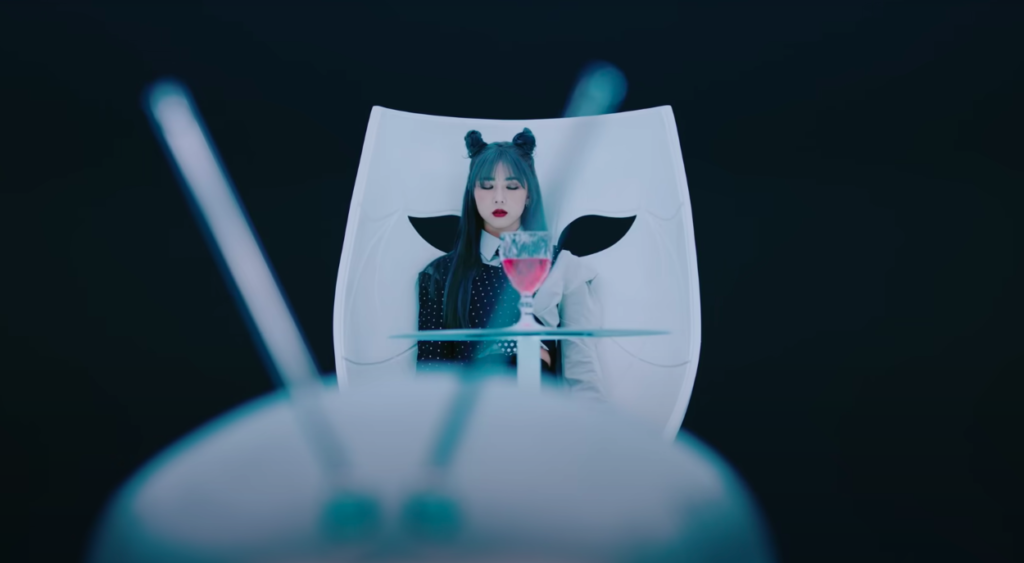
Immediately after, the song begins, and viewers are instantly caught into a trance at the seamless combination of the visuals and the lyrics. The opening lines are sung by Yoohyeon, whose bright and steady voice introduces listeners to Dreamcatcher’s initial hopefulness and their past struggles, before Handong’s thicker timbre signals the narrative shift in both the music video and the song itself.
Yoohyeon: Open your eyes. Splendid here — everyone hoped, after shedding countless sorrows
Handong: Appearing in a new world.
A far cry from their earlier days, fans have come to expect ethereal and bold visual imagery from Dreamcatcher’s music videos, and “Odd Eye” delivers this just as satisfyingly. Every shot feels luxurious, and viewers are continuously treated to new elaborate backdrops and a splendorous variety of colours. “Odd Eye” establishes a connection to its predecessors through the mirroring of several visual elements found in the first two parts of the trilogy — seemingly endlessly pits, flames, magic, masks, and most notably so, a large and lonely tree as the centrepiece. Yet, while the time setting of both “Scream” and “BOCA” seem nearly historical aesthetically, with the former alluding to black magic and the latter featuring medieval war weaponry, “Odd Eye” is interestingly seemingly set in the modern era.
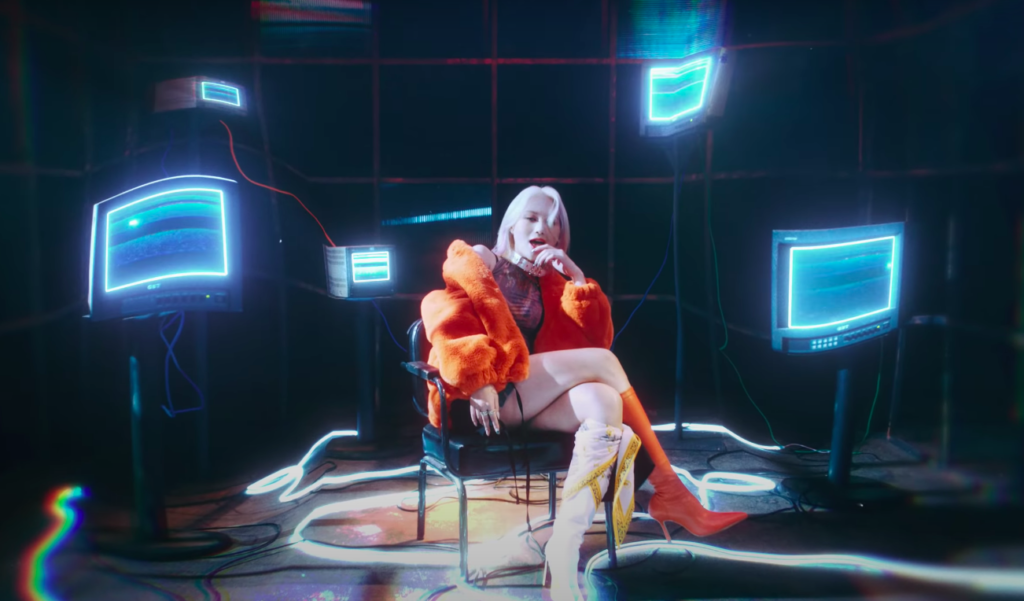
Style switches between an edgier group ensemble for the choreography scenes and gorgeous gowns is not a new formula for Dreamcatcher, but the members are dressed in street punk-inspired outfits, and the music video incorporates hints of aesthetic inspiration from cyberpunk and the neon hues of vapour wave. The music video stays true to the fantastical nature of Dreamcatcher’s concept, but the elements of realism twist bring the song’s message closer to home. This narrative choice also complements “Odd Eye”’s less majestic but grittier and edgier rock hook. The touches of modernity do not end with Yoohyeon’s interactions with the television screen at the beginning of the music video — SuA holds a lightsaber in a living room, Siyeon is surrounded by screens and loses grip of a remote control, JiU and Dami hold mobile phones and Gahyeon is pictured in a bedroom with a computer screen. Paired with glitchy visual effects and analog fonts and numbers through the music video, this inclusion of digital elements seems to encourage viewers to ponder about the dependent and potentially dangerous relationship between us and the digital sphere, but never goes too much into detail to confirm its stance.
However, it was a missed opportunity to not delve deeper into the story or make these hints more overt. The number of aesthetic elements, themes, and styles mean that casual listeners that will unlikely watch the video more than once or twice will likely miss its message and symbolism, which is a pity considering its timeliness and aptness that would make the viewing experience more impactful and meaningful. Nonetheless, the music video makes a commendable attempt at bringing these otherwise clashing elements into a visually pleasing affair. The end product thus creatively elevates the substance of the song, hinting at a fresh narrative interpretation on what otherwise would have been a lyrically straightforward song about seeing the truth for what it is, even if it is a far cry from your hopes.
I wanted to change in a hurry (Ideal dream)
The desire fading a little by little
As if following the shadow which I thought was coming after me
In a fate that cannot be changed, hope is fading away
The music video’s care at storytelling remains consistent till the end, complementing the lyrics with the visuals and capturing the emotion of the lyrics. As the song reaches its bridge, Dreamcatcher sings about inevitability and irreversible fate, as Gahyeon reaches into the screen and the next shot shows her surrounded by flames. In the final chorus, the lyrics change to express this newfound perspective and knowledge, and JiU is seen in blindfolds as she holds on to a bouquet of flowers that is also lit in flames. The innocence at the start of the song vanishes, and the members are seen reaching out to different things but never grasping onto anything with a dark yet unreadable expression on their faces. Finally, the music video closes with the same backdrop that opened the trilogy that is now dark, with words confirming the tragic ending of their story.
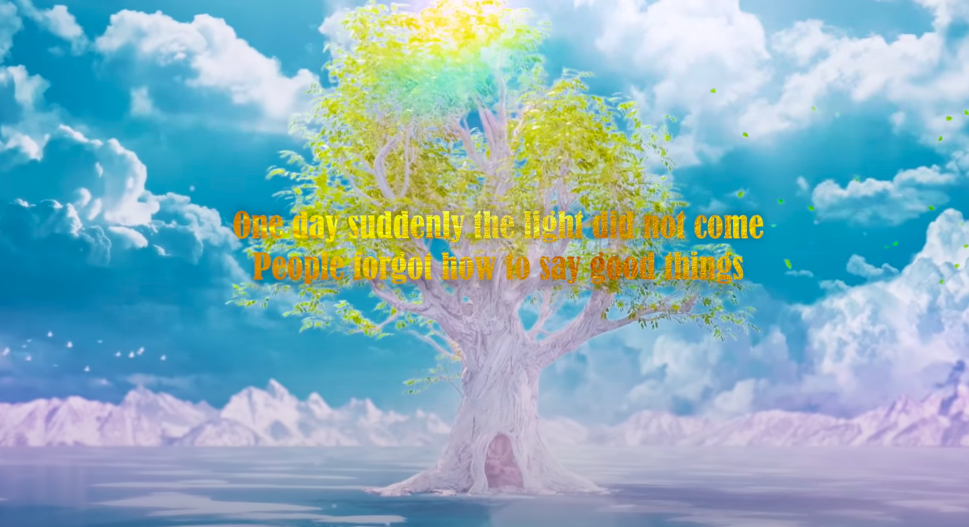
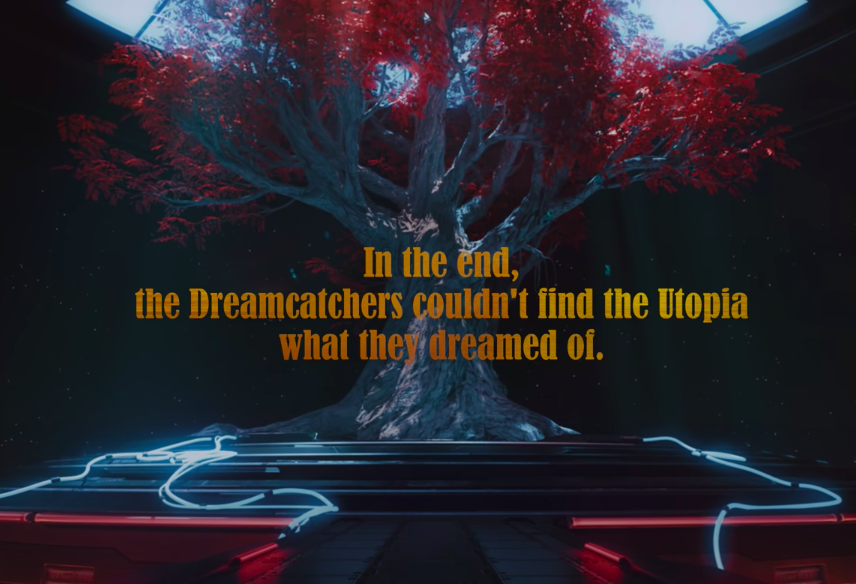
In many ways, this is Dreamcatcher at the best they’ve ever been. “Odd Eye” may not be as immediately catchy as some of their earlier work, and is likely to be less favored by but it is a worthy and solid culmination of their entire musical journey to date. It pays homage to their previous work — the ethereal, quiet verses of “Deja Vu“, the ear-catching pre-chorus melody of “Piri“, the heavier rock of “Good Night” — all with the practiced to perfection production formula of rock influences but with a top-heavy pop vocal line that shined best in the first two parts of Dystopia. The success that Dreamcatcher have gained for themselves through the years mean they evidently now boast a higher budget, and it’s clear that their entire creative team from choreography, music video to styling is having a blast maximising the potential Dreamcatcher’s entire sound and image can bring.
While the girls themselves never needed much help to stand out from the crowd, “Odd Eye” also best showcases the extent of their talents and capabilities as performers. Siyeon’s sharp vocals, Dami’s distinctive raps and SuA’s versatility as a dancer form the team’s core, but the other members play the supporting roles competently. Previously known the five-membered MINX, their re-debut as Dreamcatcher saw the additions of Handong and Gahyeon, who had noticeably less screen time and lines than the other five for most of their career, presumedly due to less experience. With “Odd Eye”, Dreamcatcher gave plenty of shine to Handong’s soulful and Gahyeon’s unique voices. By showcasing the strengths and strong charisma of all member individually, Dreamcatcher presents themselves as united and spotless unit, a perfectly triumphant return as seven.
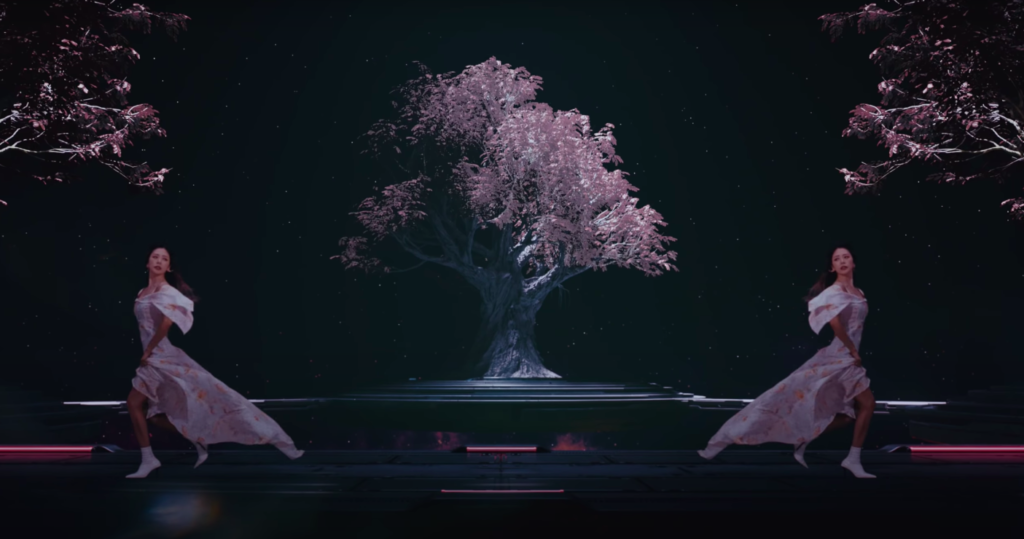
The decision of a less commercially accessible and heavier sound after a year of highs, suggests that Dreamcatcher know where their niche lies, and what their core audiences want. For a group whose appeal transcends wider than just K-pop fans or South Korean listeners, pandering to the mainstream makes little sense. “Odd Eye” is thus the glorious work of a confident, now-established group with evident pride in each of their releases, and the members perform it not only convincingly, but with entrancing fierceness and daring eyes. Despite the darkness of their concept and the bleakness that “Odd Eye” relays, Dreamcatcher’s impressive ability to continuously grow and break their own records each comeback is ironically an inspiring one. The Dystopia trilogy may have ended with Dreamcatcher not finding their Utopia, but many may argue they have already gotten there.
